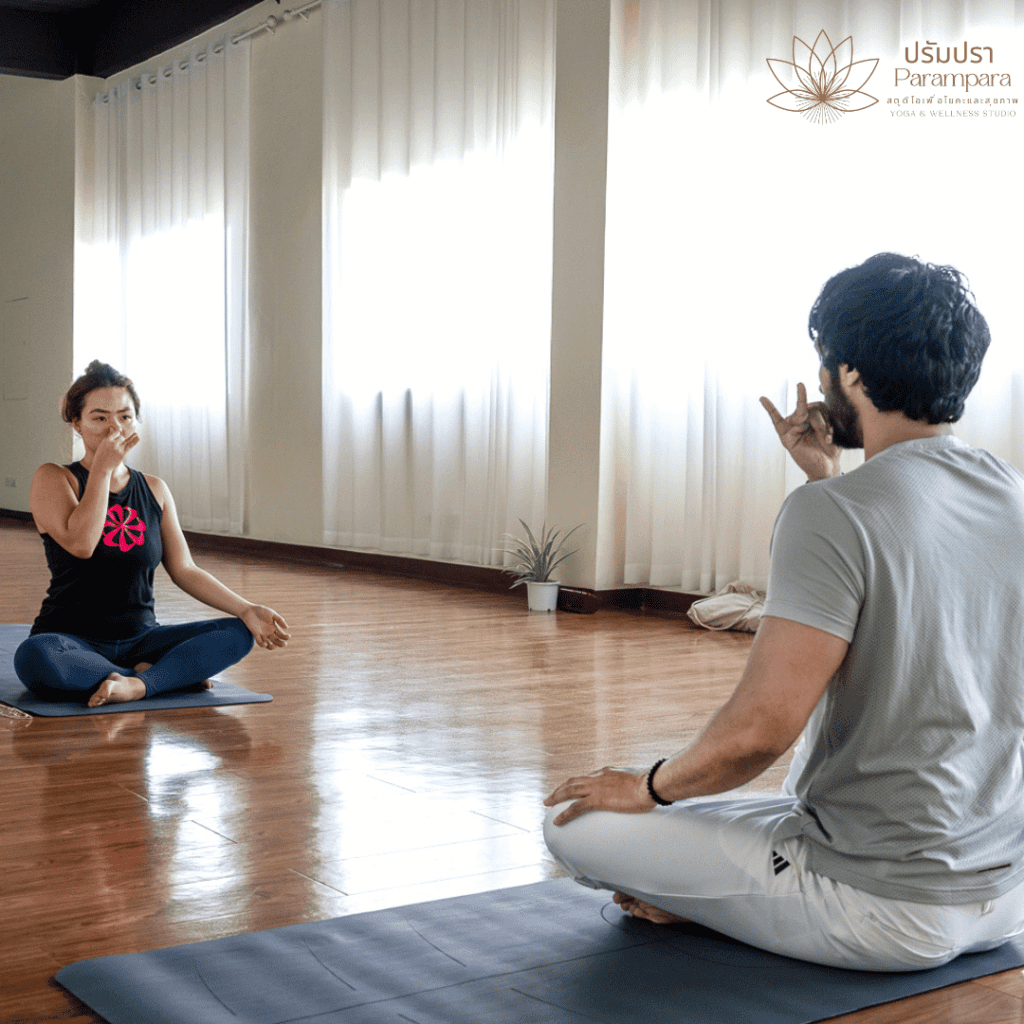Pranayama yoga, one of the most transformative aspects of yoga practice, is much more than simple breath control. It is deeply intertwined with the mind, body, and emotions, helping to elevate our energy and promote overall well-being. In this blog, we will explore the power of Pranayama yoga, why it’s essential, and how you can begin incorporating it into your practice.

Introduction
In yoga, breath is far more than a simple physiological function; it is deeply intertwined with the mind, body, and emotions. One of the central practices in yoga, Pranayama, focuses specifically on controlling the breath to enhance our energy levels, calm the mind, and promote overall well-being. In this blog, we will explore what Pranayama is, why it’s essential, and how you can begin incorporating it into your practice.
What is Pranayama Yoga?
Pranayama is a combination of two Sanskrit words: Prana meaning “vital life force” and Yama meaning “control.” Simply put, Pranayama is the practice of breath control. It is one of the eight limbs of yoga outlined by the ancient sage Patanjali and is considered a vital part of a holistic yoga practice. Pranayama is not just about breathing—it’s about harnessing and expanding our life energy.
The Importance of Pranayama Yoga in your practice
In the yogic tradition, the breath is directly connected to the flow of Prana, or life force, within the body. By controlling the breath, you can influence your mental, emotional, and physical state. Through Pranayama, you can:
Reduce stress and anxiety
Enhance concentration and focus
Improve lung capacity and oxygenation
Balance the nervous system
Increase mindfulness and self-awareness
Pranayama Yoga and the Eight Limbs of Yoga
Pranayama is one of the Eight Limbs of Yoga as described in the Yoga Sutras by Patanjali. These eight limbs serve as guidelines for living a more disciplined and meaningful life. They include:
1. Yama: Universal morality (ethical guidelines)
2. Niyama: Personal observances (self-discipline)
3. Asana: Physical postures
4. Pranayama: Breathing exercises
5. Pratyahara: Withdrawal of the senses
6.Dharana: Concentration
7.Dhyana: Meditation
8. Samadhi: Union with the universe
Pranayama is a gateway between the physical and mental aspects of yoga, linking the body and mind through the breath.
Getting Started with Pranayama Yoga
To begin practicing Pranayama, start with basic breathing techniques that can be incorporated into your daily routine. For additional reading on the benefits of Pranayama, check out this article from the International Journal of Yoga.Here are a few foundational exercises:
1. Nadi Shodhana (Alternate Nostril Breathing)
This technique helps balance the left and right hemispheres of the brain, promoting mental clarity and calmness.
- Sit in a comfortable position and close your eyes.
- Use your right thumb to close your right nostril.
- Inhale deeply through the left nostril.
- Close the left nostril with your right ring finger and release your thumb from the right nostril.
- Exhale fully through the right nostril.
- Repeat the cycle, alternating nostrils.
2. Ujjayi (Victorious Breath)
This technique creates a soft, ocean-like sound in the throat and helps calm the mind.
- Sit in a comfortable posture.
- Inhale deeply through your nose, slightly constricting the back of your throat.
- Exhale through your nose, maintaining the throat constriction, and creating a sound similar to waves.
- Focus on maintaining a slow and steady rhythm.
3. Kapalabhati (Skull Shining Breath)
This dynamic breathing practice energizes the body and cleanses the respiratory system.
- Sit with a straight spine.
- Inhale deeply through the nose.
- Exhale forcefully through the nose by contracting the abdominal muscles, allowing the inhale to be passive.
- Repeat rapidly for a set of 30 breaths.
Benefits of Regular Pranayama Yoga Practice
Consistent Pranayama practice offers numerous benefits that go beyond just improved breathing. These include:
- Enhanced vitality and energy levels
- Improved digestion and metabolism
- Greater emotional stability
- Reduced tension and anxiety
- Strengthened respiratory system
- Better control of thoughts and feelings
Integrating Pranayama Yoga into Your Yoga Practice
Pranayama can be practiced on its own or integrated into your regular yoga routine. It is often combined with meditation or performed before starting your physical yoga practice (asanas). By developing a deeper awareness of your breath, you can experience more profound benefits from your yoga practice, including greater relaxation, balance, and clarity.
Whether you are a beginner or experienced yogi, Pranayama offers a way to connect with your inner self, improve your health, and find peace in your daily life.
Join Our Pranayama Yoga Classes
At Parampara Yoga and Wellness Studio, we are dedicated to helping you find your path to inner peace and overall well-being. Therefore, we invite you to visit our schedule to find pranayama class that suits your needs. Additionally, check out our services to see the full range of offerings available to you. Furthermore, please contact us to learn more and book your first class today. Pranayama is a powerful tool for personal transformation and inner peace. By mastering your breath, you can influence your physical, mental, and emotional well-being. Take the first step by incorporating these simple techniques into your daily routine, and watch as your overall health and mindfulness improve.
